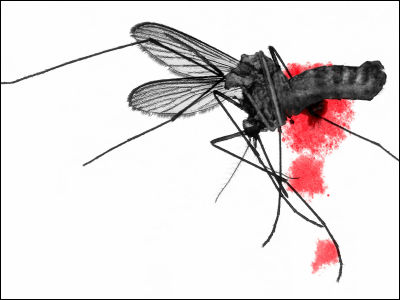Five diseases that may spread by global warming

According to WHO (World Health Organization), diseases are spreading from tropical to temperate areas due to global warming. This is because the habitat of insects and rodents (such as rats) expands due to an increase in temperature and humidity.
Now that things that are thought to be unrelated to us due to tropical distinctive diseases may eventually become familiar diseases.
Details are as below.
5 Diseases that are Thriving Thanks to Global Warming
1.malaria
Malaria spreads by infesting malaria parasites by Hamada raka. In order to prevent malaria from spreading in the spring, the temperature in the winter before it must drop to 16 degrees or less. The United Nations' IPCC (Intergovernmental Panel on Climate Change) thinks that 65% (20% more than now) of the world population will be at risk of infection due to the rise in temperature. It is also a scary place to increase resistance to antimalarial drugs / chloroquinine, malaria victims are present in Texas, New Jersey and New York.
On the other hand, in the current housing environment and infrastructure in JapanOpinions that it is unlikely that malaria will become prevalent even as global warming progressesThere is also out.
2.Dengue fever
Dengue widely distributed in tropical regions such as Southeast Asia, India, Central America, South Pacific, etc. will spread by Aedes albopictus infected with Dengue virus. Mosquito inhabitants are now limited to the tropical subtropics because larvae and eggs are frozen and dead if they are too cold. However, according to research by the EPA (US Environmental Protection Agency) and the Department of Agriculture, it is believed that dengue will invade the temperate region with only a slight rise in temperature. Mosquitoes have expanded their habitat to the Netherlands as north as Chicago and to the highlands of the Andes.
3.encephalitis
Encephalitis such as St. Louis encephalitis and Japanese encephalitis are diseases mediated by arthropods, and in New York the summer of 1999 recorded recordful hot weather and dryness, and St. Louis encephalitis andWest Nile feverBoth faded. When a drought occurs, a waterless puddle with no water flow is formed, where a large number of mosquitoes will occur although frogs preying mosquitoes will not increase. In global warming, it is thought that repeating heavy rain and drought that this type of puddle can grow more often occurs.
Four.Bubonic plague
Glandular plague is a form that is commonly seen in plague which infects by fleas getting sucked from plague-infected rats and being stabbed by that flea.Bulletin of National Academy of SciencesAccording to the research published in the report, global warming is reported to promote the occurrence of "black death". If the temperature rises by 1 degree in spring, the bacterial outbreak will increase by 50%. According to "American Journal of Tropical Medicine and Hygiene", it seems that cases of plague have increased by 60% in New Mexico when the humidity is higher than usual from winter to spring.
Five.cholera
Cholera is a disease which infects by ingesting food contaminated with Vibrio cholerae and water. In WHO, we are thinking about cholera epidemic by raising sea surface temperature, rising sea level and El Niño. Zoological plankton with cholera grows at warm water temperature.
For the disease, we can do the following measures.
· Receive preventive injections when going to fashionable areas of cholera and yellow fever
· Wear long-sleeved long pants and be careful not to get stabbed by mosquitoes and ticks
Symptoms of many diseases are similar to influenza, and doctors who are unfamiliar with examination may perform erroneous examination, so it is necessary to pay sufficient attention to themselves. Please be careful when you travel abroad.
Related Posts:
in Note, Posted by logc_nt







